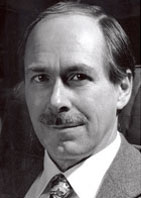Lecture 2003
Professor Gerard ‘t Hooft
Universiteit Utrecht
“BLACK HOLES AND QUANTUM MECHANICS”
Arguments from quantum field theory, thermodynamics and superstring physics indicate that black holes have got a well defined quantum structure. The quantum mechanical states are characterized by observables distributed uniformly over the horizon of the black holes. Deep and fundamental problems occur when we try to relate this picture to locality and relativistic invariance of the laws of nature:
What will an observer see when he falls into a black hole?
Are we forced by the nature of the holographic laws of physics introduced above, to revise our notion of “reality”?
Are black holes classical or quantum particles?

Gerard ‘t Hooft, Autobiography
“A man who knows everything”. This, reportedly, was my reply to a school teacher asking me what I’d like to become when I grow up. I was eight years old, or thereabouts, and what I wanted to say was “professor”, but, still not knowing everything, I had forgotten that word. And what I really meant was “scientist”, someone who unravels the secrets of the fundamental Laws of Nature.
This perhaps was not such a strange wish. Science, after all, was in my family. Just about at that time, 1953, my grand-uncle, Frits Zernike had earned his Nobel Prize for work that had led him to the invention of the phase contrast microscope. He had worked out the theory and singlehandedly constructed his microscope, with which he had stunned biologists by showing them moving images of a living cell.

